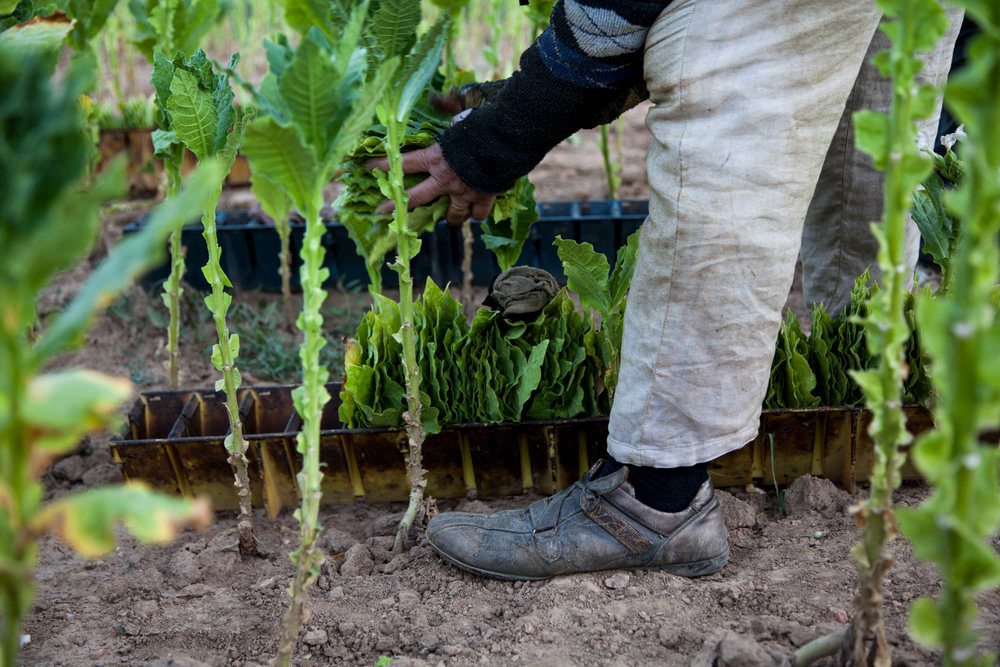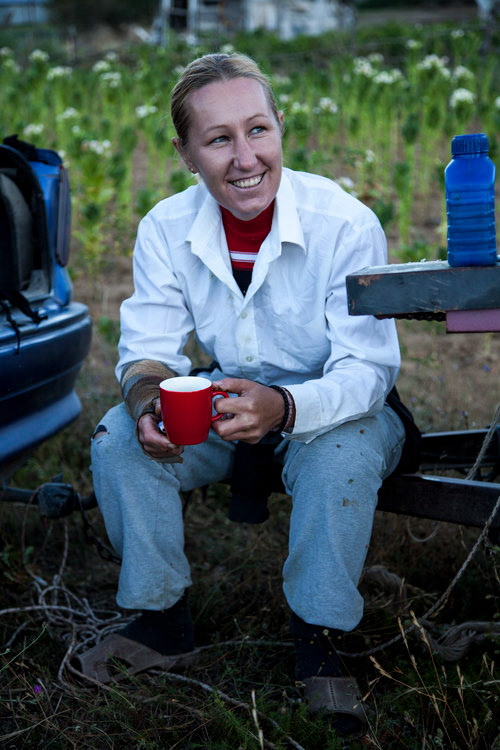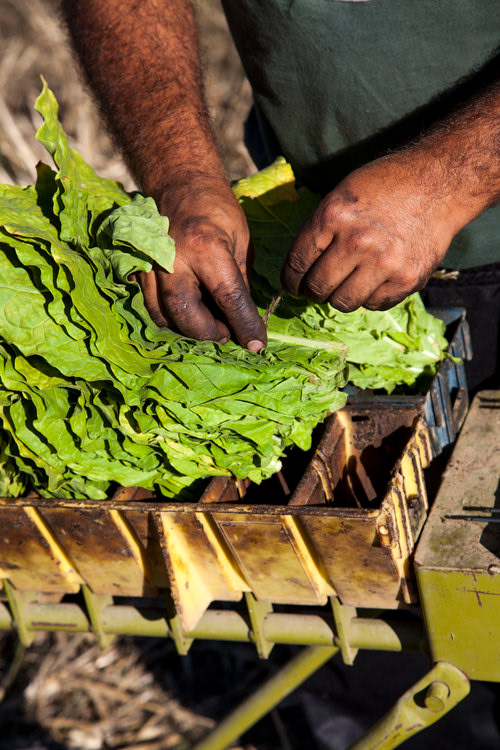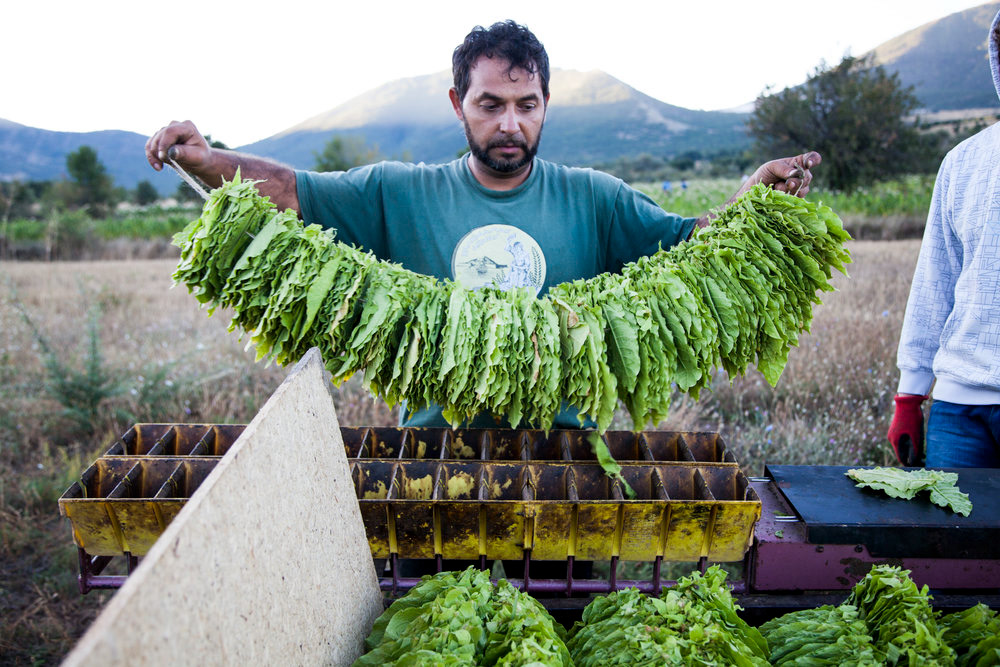Ane eats dinner with her children David (8) and Martea (4) before they arise at 2am to pick tobacco leaves.
Many people in rural Macedonia are leaving their villages to seek a better life elsewhere. With little prospect of employment and bitter winters that prevent the growth of crops, small villages are quickly becoming ghost towns. Carving an income from self employment is the only option for those that remain.
There has been a sharp move away from growing fruit and vegetables for self consumption to harvesting tobacco. Families, including young children work seven days a week from 3am averaging 100 hours work a week.
Ane, Vlatko and their children are one of many families that have opted to grow and harvest tobacco. The average yearly crop will yield 4000 Euro and after expenses Vlatko and Ane will net 2500 Euro - about $AU0.20 an hour each. This has become a better option for many rural dwellers than following traditional farm practices.
There has been a sharp move away from growing fruit and vegetables for self consumption to harvesting tobacco. Families, including young children work seven days a week from 3am averaging 100 hours work a week.
Ane, Vlatko and their children are one of many families that have opted to grow and harvest tobacco. The average yearly crop will yield 4000 Euro and after expenses Vlatko and Ane will net 2500 Euro - about $AU0.20 an hour each. This has become a better option for many rural dwellers than following traditional farm practices.
Click on each image to read more.

Vlatko makes hooks to hang the next day's string of tobacco.

Picking tobacco leaves starts at 3am usiung the light from car headlights. Tobacco leaves become too sticky once warmed by sunlight.

Vlatko and Ane receive a once a year payment of 2400 Euro ($AUD 3300) after expenses. They earn $AUD.20 an hour.

Tar from tobacco leavbes stain sewing containers.

Vlatko and Ane, on average, work 14 hours a day and earn $AUD.20 an hour. Workers they employ earn 400 Denar ($AUS9.00) a day.

String used to sew tobacco leaves, lie on the bonnet of a car.

Ane takes a break. The blue bottle (right) is brake fluid used to clean hands of the sticky residue left by the tobacco leaves.

Ane and Vlatko have four fields of tobacco plants, each 10 acres in size.

Vlatko repairs a broken needle on the tobacco leaf needling machine.

Tobacco seeds, the size of fine grains of salt, will be taken from the flowering tobacco plan ts and planted in March.

Vlatko ties the sewn tobacco leaves together.

Vlatko removes a string (Niza) of tobacco leaves from a sewing container.

Vlatko and Ane's daughter Martea, who is four years old, pierces tobaccoi leaves in preparation for sewing.

A grasshopper rests on tobacco leaves.

The result from the morning's picking.

Vlatko and Ane hang strings of tobacco leaves in makeshift shade houses.

